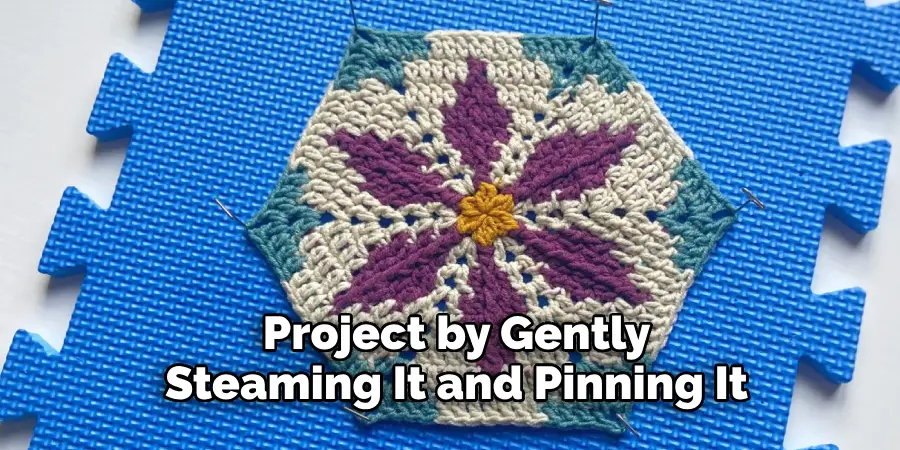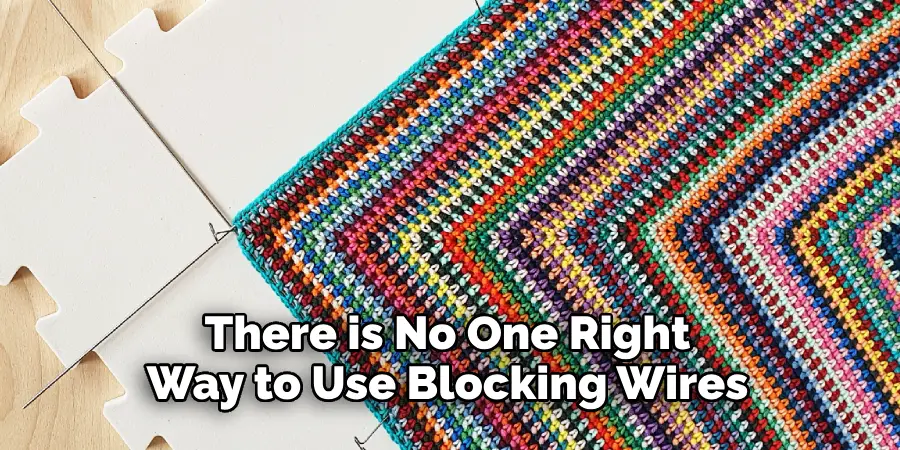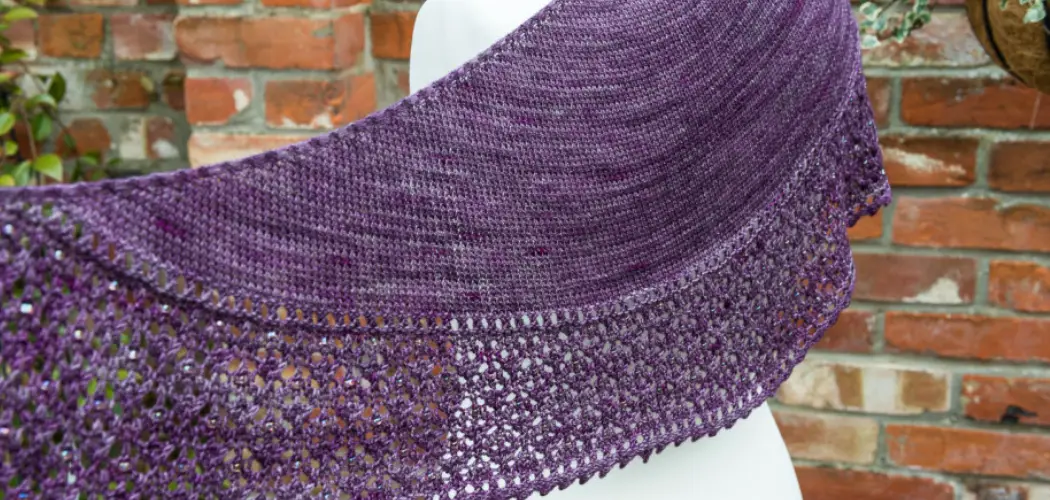Are you tired of your knitting projects taking forever to complete? Have you wished for a way to speed up the process and get better results faster? Blocking wires are an invaluable tool that can help both new and experienced knitters achieve professional-looking results in just minutes.

Learn how easy it is to use blocking wires with our helpful guide! We’ll show you the basics of how to use blocking wires – from selecting the correct size wire, to safely installing them into your workpiece – so that you can produce perfect projects every time. Get ready for beautiful stitches, superior shape retention, and reliable stitch pattern accuracy when using blocking wires!
Why May You Want to Use Blocking Wires?
1 . To Achieve More Precise Blocking
Blocking wires are thin, flexible wires that can be used to achieve more precise blocking in your knitting or crochet projects. They are typically made of stainless steel or other durable materials and come in a variety of lengths and thicknesses to suit different projects.
2 . To Create Straight Edges
One of the main purposes of using blocking wires is to create straight edges in your finished projects. This is especially useful for lace or openwork designs, where the stitches may not naturally align perfectly without blocking.
3 . To Shape and Mold Your Project
In addition to creating straight edges, blocking wires can also be used to shape and mold your project into a specific form. This is particularly helpful for projects with intricate shaping, such as shawls or cardigans.
4 . To Stretch Your Project
Blocking wires can also be used to stretch out your project and make it larger. This can be useful for projects that may have become slightly smaller during the knitting or crochet process, or for projects that require a specific size or shape.
5 . To Achieve Professional Results
By using blocking wires, you can achieve professional-looking results in your knitting or crochet projects. Blocking helps to even out stitches and create a polished finish, making your project look more refined and well-crafted.
How to Use Blocking Wires in 5 Easy Steps
Step 1: Prepare Your Project for Blocking

Before using blocking wires, you will need to prepare your project by gently steaming it and pinning it to your blocking mat. This will help ease out any wrinkles and make the project easier to work with.
Step 2: Gather Your Blocking Wires
Blocking wires are thin flexible wires that are used to straighten and shape knitted or crocheted projects. They come in various lengths and thicknesses, so be sure to choose the right wires for your project.
Step 3: Locate the Appropriate Edges to Start Blocking
Determine which edges of your project need to be blocked and locate them on your blocking mat. This will help you determine where to place the blocking wires. Also, make sure to leave enough space around your project for the wires.
Step 4: Insert the Blocking Wires
Starting at one edge of your project, gently insert the blocking wires through the fabric. Be careful not to stretch or distort your project as you do this. If needed, use additional pins to secure the wire in place.
Step 5: Straighten and Adjust the Wires

Once all the wires are inserted, gently straighten and adjust them to achieve the desired shape for your project. You can also use pins to secure the wires in place if necessary. Once you are satisfied with the shape of your project, leave it to dry completely before removing the wires and pins.
Some Extra Tips to Use Blocking Wires
1 . Do Not Push the Wires Too Hard
When using blocking wires, it is important to remember that they are thin and delicate. Therefore, you should avoid pushing them too hard or exerting too much pressure on them as this can cause them to bend or even break. Instead, gently push the wires in place and be careful not to damage your work.
2 . Use Appropriate Tension
Blocking wires can be used to stretch and shape your knitted or crocheted pieces, but it is important to use the appropriate tension. If you pull too hard on the wires, you may end up distorting the size and shape of your project. It is recommended to start with a loose tension and gradually adjust as needed.
3 . Use Multiple Wires for Larger Projects
For larger projects, it is often necessary to use multiple blocking wires in order to achieve the desired shape and size. This will also help distribute the tension evenly throughout your piece, resulting in a more professional finish.
4 . Be Patient and Let Your Project Dry Completely
After pinning your project with blocking wires, it is important to be patient and let it dry completely before removing the wires. This will ensure that your project holds its shape once the wires are removed.
5 . Experiment with Different Blocking Techniques

There is no one right way to use blocking wires, so don’t be afraid to experiment with different techniques to find what works best for you and your projects. You can try using different pinning patterns or varying the tension of your wires to achieve different effects. Don’t be afraid to get creative and have fun with it! So, these are some helpful tips to keep in mind when using blocking wires.
Frequently Asked Questions
What Precautions Should I Take When Using Blocking Wires?
When using blocking wires, it is important to take precautionary measures to ensure your safety and the longevity of your project. Some precautions you should consider are: It is always recommended to wear gloves and safety glasses when handling blocking wires.
This will prevent any accidents or injuries that may occur. Additionally, make sure to use a suitable surface for your project. A flat and stable surface is essential to ensure proper blocking. Lastly, always handle the wires with care and avoid overstretching them as this can cause damage.
How Do I Use Blocking Wires?
Using blocking wires is a fairly simple process, but it requires some skill and practice to achieve the desired results. To begin, you will need to soak your project in water and gently squeeze out any excess water. Lay the project on a flat surface and insert the blocking wires along the edges of your project, making sure they are straight and evenly spaced.
Next, secure the wires by attaching T-pins or alligator clips at the ends. You can also use additional pins or clips throughout the project to ensure it stays in place. Once everything is secure, gently stretch and adjust your project to the desired shape and size. Lastly, let it dry completely before removing the wires.
How Do I Care for My Blocking Wires?
Proper care and maintenance of your blocking wires are essential for their longevity. After each use, make sure to clean them with a mild soap and warm water. Rinse and dry them thoroughly before storing them in a cool, dry place.
It is also important to avoid using harsh chemicals or abrasive materials on the wires as this can damage them. Additionally, make sure to check for any bends or kinks in the wires before each use, and replace any damaged ones immediately.
Can I Use Blocking Wires on All Types of Projects?
Blocking wires can be used on a variety of projects, including garments, accessories, and lacework. However, it is important to consider the fiber content of your project before using blocking wires.
Delicate fabrics such as silk or cashmere may require more gentle handling and a shorter soaking time. Thicker fabrics like wool may need longer soaking times and careful stretching to achieve the desired results. It is always recommended to do a test on a small section of your project before blocking the entire piece.
Where Can I Purchase Blocking Wires?
Blocking wires can be purchased at most craft stores or online retailers that specialize in knitting and crochet supplies. There are also various DIY options available, such as using stainless steel wire or coat hangers cut to size. Whichever option you choose, make sure the wires are rust-resistant and able to withstand water exposure.

It is also recommended to invest in a variety of sizes to accommodate different project types and sizes. So, these were some frequently asked questions about using blocking wires that will help you achieve professional-looking results with your projects.
Conclusion
Overall, by using blocking wires, you can create an array of craft projects with professional-looking results. They’re excellent for eradicating any gaps in-between pieces and giving the project a neat finish. When working with blocking wires, start out with less tension and gradually increase it to reach the desired shape. Think outside the box and practice patience so you can achieve the best possible result.
Now you know how to use blocking wires! Whether it’s knitting or crochet, blocking will help ensure that your handiwork keeps its shape for years to come. So don’t be afraid to get creative — have fun experimenting with different shapes and sizes! Keeping these techniques in mind, let your imagination run wild and explore what else blocking wires can do for your craft projects. We invite you to take on a creative project today and share the end results with us!


